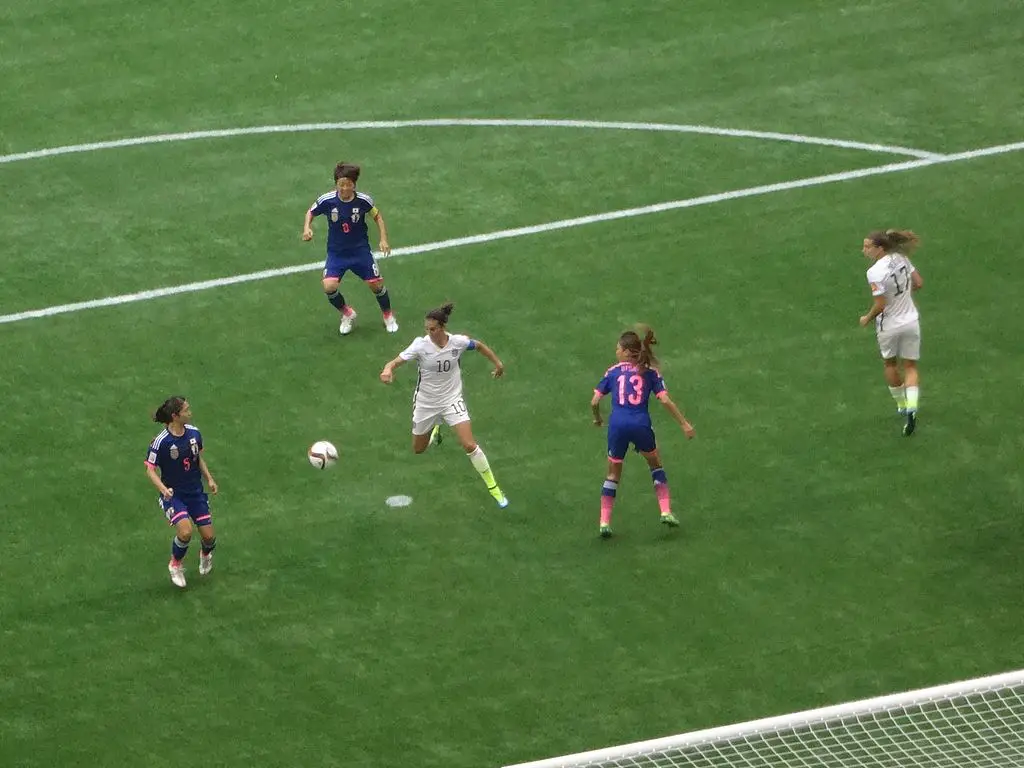 It’s pretty obvious that playing more soccer helps develop your skills, but you might not know that watching games on TV can also make you a better player.
It’s pretty obvious that playing more soccer helps develop your skills, but you might not know that watching games on TV can also make you a better player.
This sounds pretty cool, doesn’t it? Just flip on the tube and see your skill level skyrocket.
Of course, watching soccer alone won’t turn you into a superstar, but I believe that most players greatly underestimate the value of regularly watching matches on TV.
First of all, there is value in following a favorite team, becoming emotionally invested in the results, and talking about professional soccer with your family and teammates.
Engaging with the sport outside of your own games will certainly have a positive effect on your play.
But this isn’t what I’m talking about here. This post isn’t about what games you watch, it’s how you watch them.
There are particular ways to watch a soccer game that will provide real benefits, and it won’t matter if you’re watching the World Cup final or a non-conference college game.
What to Watch For in a Soccer Game on TV
These benefits will require a shift in what you focus on during the game.
First, the most common tendency is to follow the ball as you watch. This is very common, and we do it all the time too.
But it’s much more valuable to follow a particular player, and see how they move off the ball, create space for themselves and interact with their teammates.
It’s an incredible experience to follow a player like Lionel Messi for a whole half of play, and see how much he does for his team both on and off the ball.
My advice is to pick a player who plays your position, either up top, in the midfield or in the back.
How to Identify a Soccer Team’s Formation
Of course, a lot of these things depend on the formation and overall strategy of the team in question. And that brings us to the second major thing you can do while watching a soccer game: analyze the formation and tactics.
At the beginning of soccer matches, the announcers go over each team’s starting line-up and formation. (a 4-4-2, 4-3-3, 3-5-2, etc)
I recommend not watching this part so you can test yourself on what formation the two teams are playing.
In order to do this, focus on one team at a time. The best way to determine what formation a team is playing is on the defensive side of the ball.
When a team retreats to play defense, you will be able to see distinct lines of defense (ie. the backline, midfielders, and forwards).
You will also be able to see where the team likes to hold their defensive line, whether it is high (putting pressure on the ball) or low (preferring to sit back).
Most teams stay in one formation defensively and offensively, but sometimes teams change formation on the offensive side of the ball to add numbers into the attack.
A team that changes formation from defense to offense likes to get numbers behind the ball to defend but once they get the ball get numbers forward. In order to get numbers forward, the team must be able to keep possession.
Do not mistake outside backs making overlapping runs to be a change in formation. Depending on the formation, outside backs will be overlapping outside midfielders or wingers.
When teams change formation on the attack, they will most likely move either one or both outside backs forward into a midfielder role, most likely outside mid. Then a midfielder will move into a forward/striker/winger role.
This type of knowledge can be quite valuable to your own game.
By knowing what formation the opposing team is in, you will be able to exploit their weaknesses.
You will know what spaces the opposing team is giving up, so you will know what spaces to exploit.
Don’t get discouraged if you find this difficult at first; the more you watch, the easier it will get, and the more you can apply it to your own game.
Do you have any other tips for getting the most out of soccer games you watch on TV? If so, let us know in the comments below.
Photo Credit: romexico






Leave a Reply